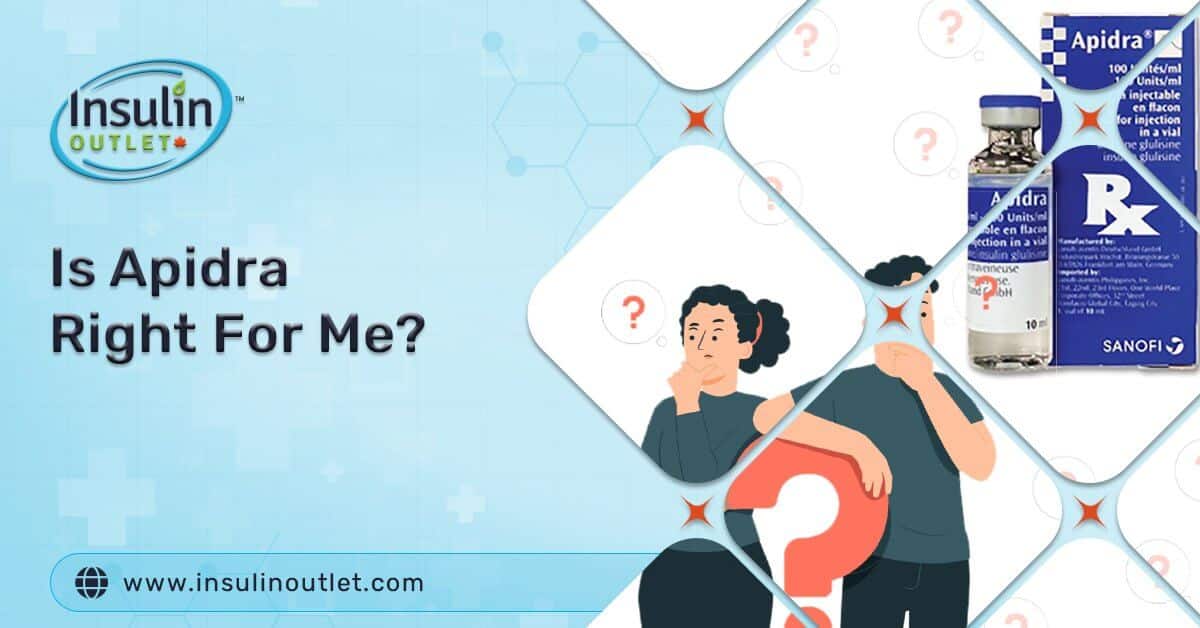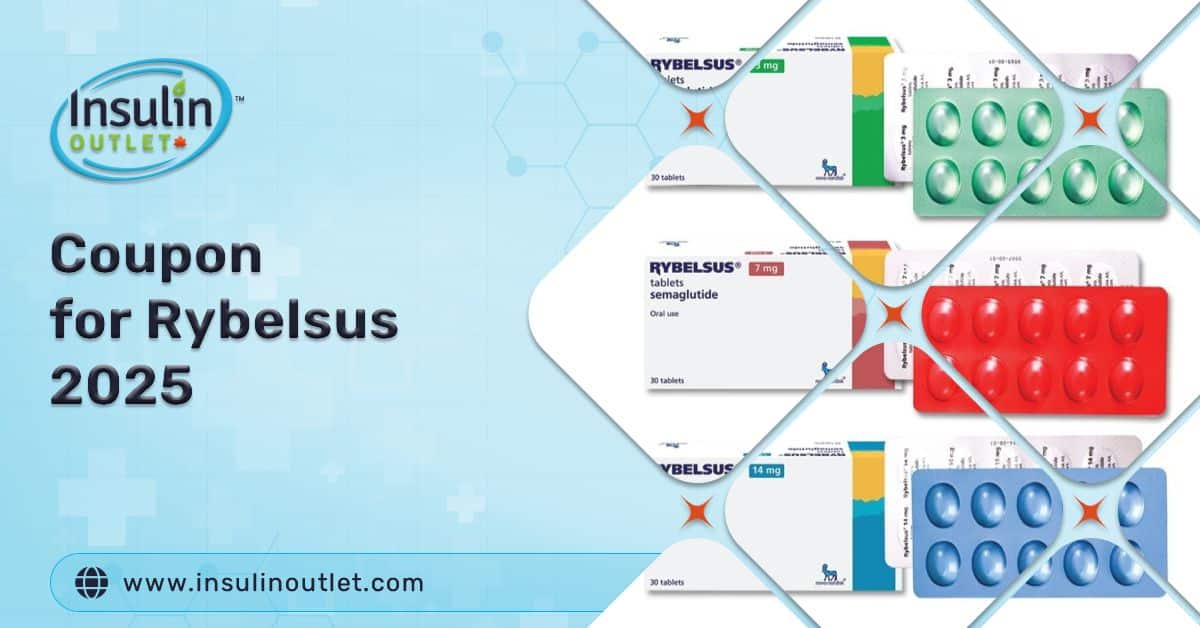
Insulin syringes are used to control blood sugar levels in people with diabetes. These syringes have become very important tools for stabilizing blood sugar spikes and improving the standard of life for those living with diabetes. There are different insulin syringe sizes, but before we reveal the different sizes, let’s first dive into what diabetes is all about.
Table Of Contents
ToggleHow are Diabetes, Insulin and Syringes Related?
Diabetes is w medical condition whereby the affected individuals system is incapable of processing blood sugar. There are different types of diabetes, but they all have one thing in common; they result in irregular blood sugar levels. This irregularity occurs because the body is incapable of producing sufficient insulin to break down sugar/glucose. This eventually leads to an accumulation of blood sugar which then leads to a myriad of health problems.
Insulin is a hormone in the body that is produced by the pancreas. This hormone works to produce convert glucose into energy. For people living with diabetes, the insulin produced by their pancreas is not sufficient and incapable of converting glucose well enough. For such individuals, manually injected insulin can help them control their blood sugar the unnatural way. They also use monitors and lancets to ensure their blood sugar levels are not fluctuating.
People who administer insulin do so based on the following factors
- Preference (there are different types of insulin, such as insulin isophane.
- Lifestyle
- Insurance coverage
For some people, they prefer to administer insulin using syringes to draw the insulin from a vial or bottle.
As of today, millions of people in the US have one diabetes or the other. For those with Type 1 diabetes, their pancreas does not produce insulin to regulate blood sugar, but for Type 2 diabetics, their body does not produce enough insulin or is incapable of using it effectively to control blood sugar.
Apidra Vials
$59.99
According to estimates, more than 7 million people use insulin to manage their condition, and most of them use syringes or other forms of administration.
Insulin can be administered using:
- Syringes (with vials)
- Pens
- Pumps
The choice you go for will depend on your doctor’s advice, cost and of course, your preference.
Insulin Syringes
There are a few things to bear in mind in case you decide to use insulin syringes. Insulin syringes are only to be used just once and not repeated use so as to avoid the risk of infections. Furthermore, users are advised to change the injection sites to avoid causing the growth of abnormal fat in the same area or liphypertrophy complications.
Another thing to note is that insulin is injected just under the skin and not into the muscle, so the best insulin syringe size will depend on your dose. Since you will most likely use it when your blood sugar level is up or down, you may require different syringe sizes depending on your dosage requirement. This is why the syringes come in different sizes.
Insulin Syringe Sizes
Insulin syringe sizes are of different lengths and gauges. The length determines how deep the needle can penetrate. Needles are normally designed to penetrate a layer of far and not the muscles; that is why they are not very long. The average needle size is 4mm – 12.7mm
As for the gauge, this is determined by the thickness of the needle. Needle switch thicker gauges administer insulin much faster than thinner needless and vary between 28-31 gauges.
Why is Insulin Syringe Needle and Gauge Important?
It is important to buy a insulin syringe with a gauge or length that you are comfortable with, but size does not affect the potency of insulin leakage, nor does gauge.
But for, most users, they prefer shorter needles because they are much easier to use than longer ones. The standard needle length used by many is 4-8mm.
Then as for the gauge, thinner needless are more preferred by many than thicker ones because they are less painful and easy to insert into the skin. But there remains a minority who prefer longer than thicker needles, though.
While needle length and gauge should be a thing of preference, what’s more important is the insertion technique used when administering the insulin shot. It is also important that you change the injection sites instead of using the same site over w over again to avoid complications like swelling, skin redness or tissue damage.

How to Choose the Right Insulin Size
Insulin syringe sizes vary, and they are designed to deliver different doses. The three syringe sizes are 30 units (0.3ml), 50 units (0.5ml) and 100 units (1ml). These different kilometer sizes refer to the different barrel sizes and the volume of insulin they can take. Also, make barrels have visible markings showing 1 unit or 2 units intervals to make dose measurement easier.
It is generally advised by experts that first time users use thin and short needles because they are less painful and easy to use. Long needles are not only more difficult to use, but the user may also accidentally insert an intramuscular region which will cause the insulin to enter the subcutaneous fat. If this happens, the insulin will be absorbed faster than it should, which will lead to painful complications
When picking a needle, the best course of action will be to rely on the guidance of a medical team who will advise you on the volume you should take and the required doses per shot. The expert should be responsible for picking the barrel size and the number of doses you will need for a whole day, week, or month.
How to Administer Insulin Through Your Syringe
The body uses enzymes to break down insulin so therefore, subcutaneous injections are the most effective form of inserting insulin into the body just below the skin. This helps the system to absorb the insulin gradually into the bloodstream, where it will then be circulated throughout the body. Here are the steps to take to administer insulin with a syringe.
Prepare your supplies: After you have washed your hands thoroughly, pick up a fresh vial and needle. Cross-check the insulin content, and ensure that the content does not contain particles. If you have to shake the vial a little, then do that.
Open the vial: To open the insulin vial, remove the protective covering and use a swab doused in alcohol to sterilize the top of the now exposed vial.
Open the syringe: Now, pick up your syringe, remove the cap from the needle and pull back the plunger until it reaches the marker limit you are to draw. Now place the needle through the rubber opening in the vial and push the needle to inject air. Then turn the vial upside down with the needle still in place and pull the plunger to extract the volume of insulin you require for the shot.
(If you notice bubbles in the syringe, tap the sides to make the bubbles float to the top, then push it out using the plunger to drawback until the syringe pulls the correct dose).

Remove needle: Safely remove the needle slowly from the vial. Ensure that the needle tip doesn’t come in contact with any surface or objects until after you must have injected yourself.
With the needle now out of the vial, you can now inject yourself. Common spots include thighs, hips, stomach, backs, arms and buttocks
Selecting the right site: You can pick any site you feel comfortable with, but it is best to pick a different site for every shot, so a particular site is not overused. Once the site has been decided, clean the site with spirit or alcohol. Then pinch the spot with your finger.
Insert needle: Insert that needle, then push the plunger slowly to inject the insulin only your body but don’t pull out the needle immediately but leave it in place for about five seconds.
Remove needle: Now, remove the needle and apply pressure on the site with your finger to prevent any insulin drop from leaking out. Don’t rub; just keep pressure on with your finger.
After administering the insulin, please do not keep the syringe but dispose of it immediately. You may place it on a container or a thick material and make sure you wrap it properly because you dispose of it. It is wrong to use the same syringe reuse even if you use it on your body only. Repeated use may lead to infection. Also, it is wrong to dispose of syringes haphazardly. Used syringes are classified as medical waste do they should be disposed of in accordance with the laid down procedures governing waste disposal in your area.
Final Thoughts
Insulins syringes are of three major sizes, namely, 0.3, 0.5 and 100ml. Before you decide on the size to use, consult with your doctor and ensure that you follow the instructions you are given.
Share:












